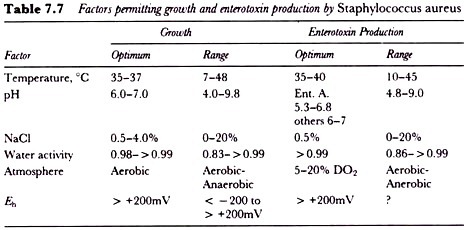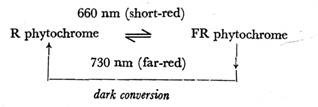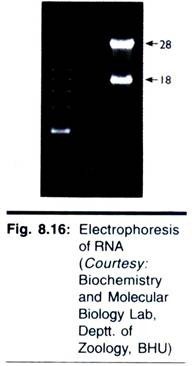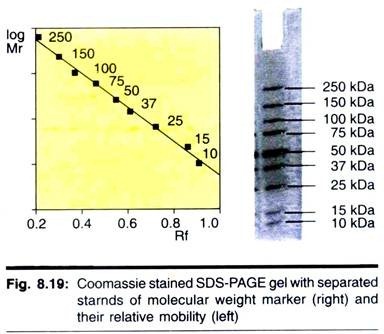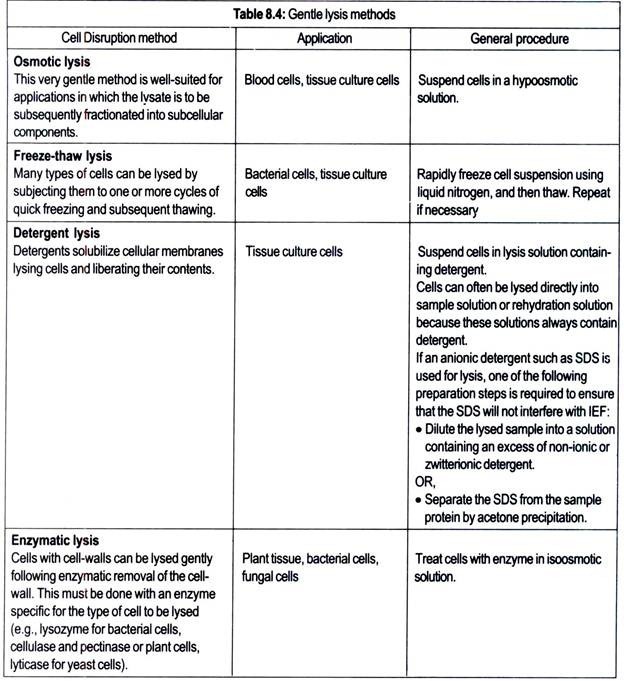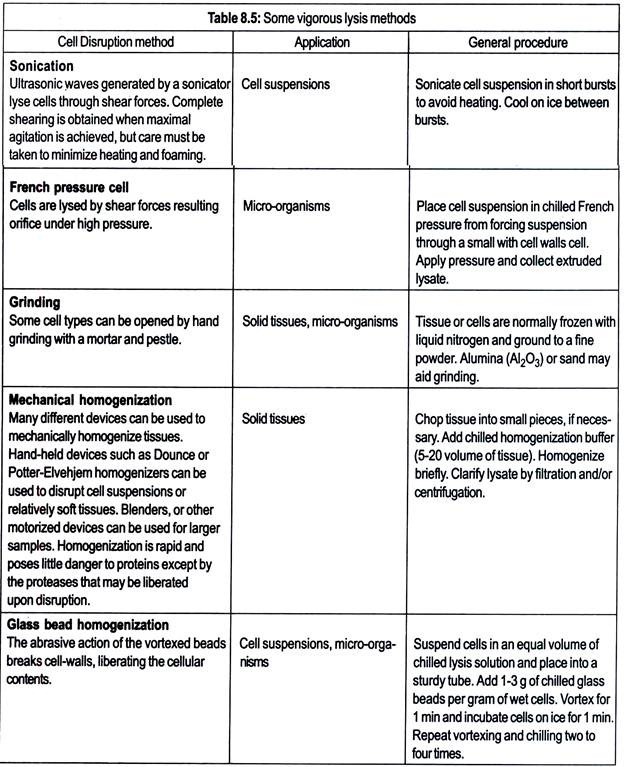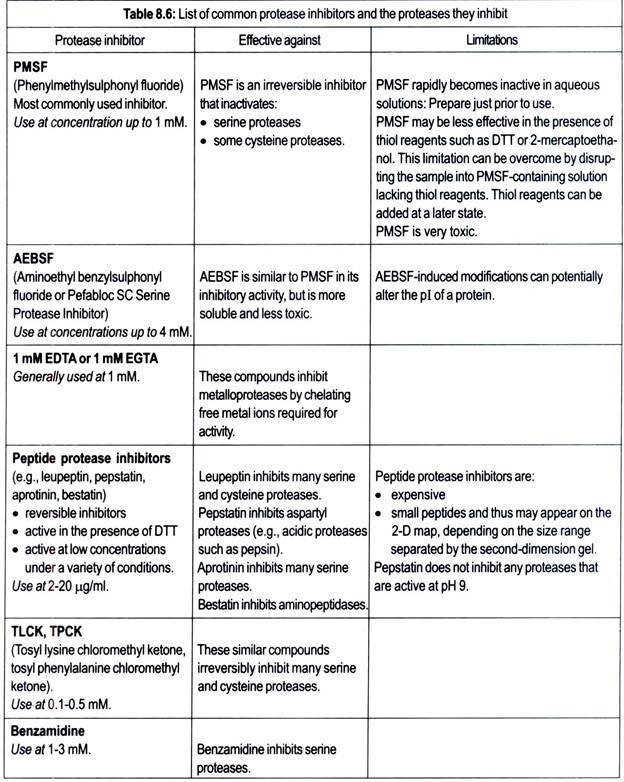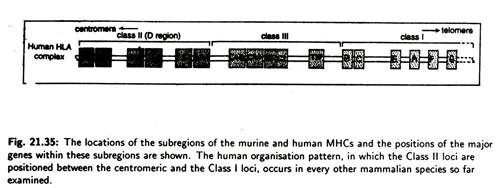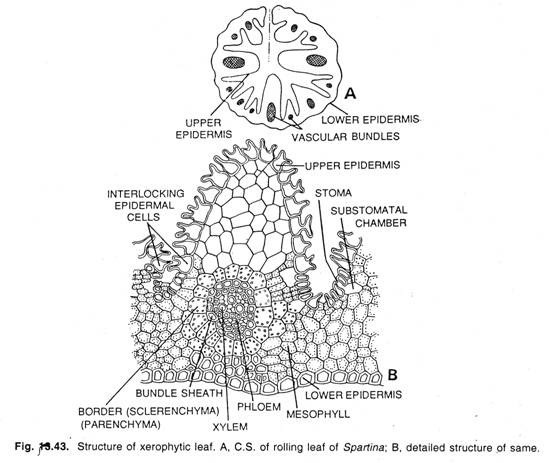Here is an essay on the ‘Families of Monocotyledons’ for class 11 and 12. Find paragraphs, long and short essays on the ‘Families of Monocotyledons’ especially written for school and college students.
Families of Monocotyledons
Essay Contents:
- Essay on Orchidaceae (Orchid Family)
- Essay on Zlngiberaceae (Zinger Family)
- Essay on Cannaceae (Canna Family)
- Essay on Musaceae (Banana Family)
- Essay on Amaryllidaceae (Amaryllis Family)
- Essay on Liliaceae (Lily Family)
- Essay on Commelinaceae (Spiderwort Family)
- Essay on Palmae (Arecaceae)
Essay #
1. Orchidaceae (Orchid Family):
It is a large family consisting of 788 genera and more than 18,500 species and grows abundantly in the tropical regions. It is less common in the Arctic regions. In India, the family is represented by 128 genera and 881 species, found to grow commonly in Eastern Himalayas, Khasia hills and also in Western Ghats.
The type genus of the family is Orchis.
Systematic Position:
Orchidaceae: Distinctive Features:
Identifying Characteristics:
1. Plants are perennial herbs; epiphyte, saprophyte or terrestrial.
2. Flowers are bisexual, epigynous and medianly zygomorphic, flowers resupinate during anthesis.
3. Perianth 6 in two whorls, of which the posterior median member of the inner whorl is larger in size forming labellum.
4. Stamens 1 or 2, pollen grains are present in pollinia.
5. Filament is united with the style and forms a column, the gynandrium.
6. Carpel 3, syncarpous, ovary inferior, one-chambered with many ovules on parietal placentation.
7. Stigma 3, of which 2 are fertile and the other 1 is sterile forming rostellum.
8. Fruits capsule and are without endosperm.
9. Seeds numerous, minute.
Floral Formula:
Phylogeny and Systematic:
The family shows close relationship with Musaceae, Zingiberaceae and also with Liliaceae.
Bentham and Hooker placed the natural order Orchidaceae at the beginning as series 1 Microspermae along with Hydrocharitaeae and Burmanniaceae under the class Monocotyledons due to the presence of small seeds. Engler and Prantl placed the family Orchidaceae at the end in their 11th series Microspermae under the class Monocotyledoneae.
Hutchinson placed the family under a more or less advanced order Orchidales (a monotypic group) next to Burmanniales, division Corolliferae of subphylum Monocotyledones. Takhtajan (1980) placed it under Orchidales next to Burmanniales, subclass Liliidae of class Liliopsida (Monocotyledons). Cronquist (1981) placed the family under the last order Orchidales, class Liliopsida.
The flowers of Orchidaceae are highly specialised. It was considered to have been derived from liliaceous or amaryllidaceous stock. Hutchinson (1959) considered the genera like Neuwiedia and Apostasia as the connecting link between Liliaceae and orchids.
Consideration of the family Orchidaceae as the highest evolved one among Monocotyledons:
The family Orchidaceae is considered by some taxonomists to be the highly advanced family among the Monocotyledons for the following reasons:
1. The family consists of about 788 genera and 18,500 species, are mostly found in the damp tropical and temperate regions of the world;
2. The plants are strictly herbaceous and many of them are epiphytic in nature;
3. Flowers are zygomorphic and epigynous;
4. The inner posterior member of the perianth forming the labellum, is one of the highest morphological adaptations for insect pollination. The genus Ophrys found in Algeria shows the labellum like a female bee, is no doubt a highly adaptive feature for insect pollination;
5. Number of stamens is reduced to one or two;
6. The filament is united with the style forming a column known as gynandrium;
7. Pollen grains are united into a mass and present in a special structure the, pollinium which checks the wastage of pollens during cross pollination.
8. Out of three stigmas two are receptive and the third one is sterile and forms a structure called rostellum, an adaptation for cross- pollination by insects.
9. The seeds are very minute with undifferentiated embryo.
Common Plants:
1. Acampe papillosa Lindl.;
2. Cypripedilium elegans Reichb;
3. Dendrobium nobile Lindl.;
4. Didymoplexis pallens Griff.;
5. Geodorum densiflorum (Lamk.) Schlecht.;
6. Habenaria digitata Lindl.;
7. Orchis spathulata Reichb. f;
8. Vanda tessellata (Roxb.) ex G. Don (Syn. V. roxburghii R. Br.) etc.
Key to Genera:
I. Terrestrial herbs with underground rhizomes; leaves elliptical, plicate, sheaths forming a pseudostem; lip white with pink lines or streaked with purple or red…………. Geodorum.
II. Terrestrial herbs, leafless, saprophytic, with tuberous roots; inflorescence a scanty raceme of white flowers……………… Didymoplexis.
III. Terrestrial 1-leaved tuberous herbs; leaf broadly cordate or orbicular, strongly plicate, lying on the surface of the ground; flowers on scapes arising from the tuber………………………. Pogonia.
IV. Terrestrial herbs with succulent glabrous stem; leaves membranous, often withering at flowering times; flowers small, in racemes or spikes………….. Zeuxine.
V. Epiphytic herbs with leafy stems; leaves thickly coriaceous or fleshy, flat, keeled or terete; flowers large often showy in dense racemes or sometimes solitary; petals like sepals; lip large, base saccate or spurred; caudicle very broad … Vanda.
VI. Epiphytic herbs; leaves coriaceous, flat, often keeled; flowers small in racemes, corymbs, umbels or panicles; petals like sepals; lip small, sessile, forms a cylindric or saccate spur; caudicle very narrow………… Saccolabium.
VII. Epiphytic herbs with pseudo-bulbs; leaves sessile, bases sheathing; flowers large and showy, solitary or in racemes; petals like sepals; lip sessile or clawed at the base; anther 2-celled; pollinia 4, usually slightly coherent… Dendrobium.
VIII. Epiphytic shrub; stem terete or angled; leaves coriaceous or fleshy or 0; pollinia granular ……………. Vanilla.
Plants of Economic Importance:
Different plants of this family are used variously.
These are:
A. Food:
1. Platenthera sussannae (Syn. Habenaria sussannae). The tubers of this plant are edible.
2. Orchis latifolia and Cymbidium aloifolium. The ‘salep’ of commerce is extracted from the dry tuberous roots and is used as a farinaceous food. It is also used in silk industry.
B. Flavouring Material:
1. Vanilla fragrans (Syn. V. planifolia) (Vanilla). The dry fruits used to extract ‘vanilla’ of commerce. It is used for flavouring of various food products like chocolate and confectionery.
C. Medicinal:
1. Eulophia epidendrae. The tubers of this plant are used as vermifuge.
2. Geodrum densiflorum. The roots are used as insecticide.
3. Platenthera sussannae. The tubers are used to cure the bullae on palms.
4. Vanda tessellata (Syn. Vanda roxburghii). The roots are used in the treatment of rheumatism and scorpion-bite.
D. Dye:
1. Calanthe veratrifolia. The leaves contain a glycoside, which on hydrolysis yield a blue dye known as ‘indigo blue’.
E. Ornamental Plants:
Different species of the following genera are cultivated for their beautiful and attractive colouration.
These are:
1. Aerides.
2. Bletilla.
3. Cattleya.
4. Coelogyne.
5. Cypripedium.
6. Cymbidium.
7. Dendrobium.
8. Epidendrum.
9. Epipactis.
10. Paphiopedium and
11. Vanda.
Essay #
2. Zlngiberaceae (Zinger Family) :
The family is represented by about 46 genera and 1275 species, distributed throughout the tropics and subtropics.
The type genus of this family is Zingiber.
Systematic Position:
Zingiberaceae: Distinctive Features:
Identifying Characteristics:
1. Plants are aromatic herbs.
2. Leaves simple and ligulate.
3. Inflorescence solitary, racemose or panicle.
4. Perianth 6 (3+3), differentiated into calyx and corolla.
5. Stamens 6, of which 1 is fertile and the rest 5 form either petaloid staminodes or abortive. Two petaloid staminodes of the inner whorl united together and form labellum.
6. Fruit generally capsule.
Floral Formula:
Common Plants:
1. Costus speciosus (Koenig ex Retz.) Smith;
2. Curcuma aromatica Salisb.;
3. C. amada Roxb.;
4. Globba bulbifera Roxb.;
5. Hedychium coronarium Koen.;
6. Kaempferia rotunda L.;
7. Zingiber officinale Rose.
Key to Genera:
I. Ovary 1-celled; stem leafy; flowers yellow; herbs with creeping rhizomes and erect stems; buds often replaced by bulbils ………Globba.
II. Ovary 3-celled with axile placentation:
1. Lateral staminodes broad
i. Connective not spurred at the base; corolla tube long and slender
(a) Filaments short; connectives broad crested; stem short with a few leaves, or no aerial stem …………. Kaempferia.
(b) Filaments long; connectives not crested; stem elongated, leafy … Hedychium.
ii. Connective spurred at the base; stem- less herbs; leaves often very large; flowering spike surmounted by a coma of coloured bracts …Curcuma.
2. Lateral staminodes small or 0 or adnate to the lip, Flowering spikes dense cone-like, but not surmounted by a coma of bracts –
i. Filaments short, not petaloid …………….. Zingiber.
ii. Filaments petaloid bearing the anther on its middle …………. Costus.
iii. Filaments short, with or without petaloid crest …………… Amomum.
3. Flowers in racemes or panicles at the top of tall leafy stems …………. Alpinia.
Plants of Economic Importance:
The members of this family are useful for various purposes such as spices, ornamentals and also have other uses:
A. Spices:
Some members which yield spices are:
1. Amomum aromaticum (Bengal Cardamon, Elach, Elachi).
2. A. subulatum (Nepal Cardamon).
3. Alpinia officinarum.
4. A. galangal Sw.
5. Curcuma amada (Amada).
6. C. anguistifolia (East Indian arrowroot, Tikhur).
7. C. longa (Turmeric, Halud).
8. Elettaria cardamomum var. minor (Chota-elachi).
9. Zingiber officinale (Ginger, Ada).
B. Ornamental Plants:
Some members cultivated as ornamentals are:
1. Alpinia speciosa (Shell flower).
2. Cautleya spicata.
3. Globba racemosa.
4. Hedychium coronarium and H. gardnerianum are commonly called ginger lily.
5. Kaempfera rotunda (Bhui champa).
6. Roscoea alpina and R. purpurea.
C. Plants of Other Uses:
1. Curcuma longa (Turmeric). The rhizome yields a yellow dye used in cooking (kitchen spice) and also in cosmetics.
2. C. zedoaria (Zedoary). The tubers yield zedoary used as a tonic or perfume.
3. Hedychium spicatum (Kafur-kachri). The plant is the source of ‘Kafur-kachri’, the ingredient of scented powder.
4. Zingiber officinale (Ada). The ginger oil obtained from the rhizome is used in perfumery.
Essay #
3. Cannaceae (Canna Family) :
The family is represented by a single genus Canna (monotypic) with about 10 species, distributed in tropics and substropics.
The type genus of the family is Canna.
Systematic Position:
Cannaceae: Distinctive Features:
Identifying Characteristics:
1. Plants are perennial herbs.
2. Leaves simple without ligule.
3. Inflorescence scorpioid cyme.
4. Flowers bisexual, zygomorphic, epigynous and asymmetrical.
5. Perianth 6 (3+3), outer whorl sepaloid and free but inner whorl petaloid and connate at the base.
6. Stamens 6, of which posterior median member of the inner whorl forms petaloid staminode with ½ anther lobe fertile. Out of the remaining 5, one (anterior member of the outer whorl) becomes abortive and the rest form petaloid staminode.
7. Fruit a loculicidal capsule with warty wall crowned by persistent calyx.
Floral Formula:
Common Plants:
1. Canna indica L.
2. C. edulis Ker-Gawl.
3. C. orientalis Rose.
Plants of Economic Importance:
This family is of limited economic importance. Some members are important for their ornamental value.
A. Ornamental Plants:
1. Canna indica and C. orientalis. Both the plants and their varieties are cultivated in the garden for beautification.
B. Food:
1. Canna edulis. Rhizome is used in the preparation of starchy food.
C. Vegetables:
1. Canna orientalis. The tuberous rhizome is used as vegetables.
Essay #
4. Musaceae (Banana Family) :
The family is represented by about 5 genera and 150 species, widely distributed in tropics.
The type genus of this family is Musa.
Systematic Position:
Musaceae: Distinctive Features:
Identifying Characteristics:
1. Plants are generally perennial herbs with rhizomatous stem.
2. Leaves simple with sheathing leaf base, those generally aggregated together and form a false stem.
3. Flowers are epigynous, zygomorphic and generally bisexual, develop on mixed spadix inflorescence.
4. Perianth 6 in two whorls, petaloid.
5. Stamens 6, 5 fertile and 1 sterile or wanting.
6. Ovary inferior, carpel 3, 3-chambered with many ovules on axile placentation.
7. Fruit berry or capsule.
Floral Formula:
Common Plants:
1. Heliconia sp.
2. Musa balbisiana L.;
3. Ravenala madagascariensis Gmel. – Pantho- padap (Traveller’s tree);
4. Strelitzia reginae Banks – Bird-of-paradise.
Key to Genera:
I. Sepals free; petals long and narrow; stamens 6 perfect; stem tree-like, marked with annular leaf-scars; leaves distichous, very large; fruit capsule ………………….. Ravenala.
II. Sepals united into a split spathaceous tube; leaves spiral, oblong; stamens 5 perfect; fruit a berry …………………………………….. Musa.
Plants of Economic Importance:
The members of this family are useful for various purposes — vegetables, fruits, fibre, ornamental plants etc.
A. Vegetables:
1. Musa balbisiana L. The unripe fruits, inflorescence stalk and inflorescence (after removing bracts, style with stigma and part of perianth) are taken as vegetables.
B. Fruits:
1. Musa paradisiaca L. subsp. sapientum L. commonly called Martaman, Champa, Kanthali etc. The ripe berries are used as fruits.
2. M. acuminata (Singapuri, Basrai, Red banana etc.). The ripe berries are used as fruits.
C. Fibre:
1. Musa textilis Nee. The sheathing leaf bases yield ‘Manila hemp’ or ‘Abaca’, the fibre is used for cordage and also used to prepare Abaca cloth.
D. Ornamental Plants:
1. Ravenala madagascariensis J. F. Gmel. The watery latex present in the aerial stem is used by the travellers in the deserts for quenching their thirst, collect by removing the leaves. The plant is also grown for beautification in the garden.
2. Heliconia sp. and Strelitzia reginae are also costly ornamental plants.
E. Other Uses:
1. Musa acuminata (Singapuri, Basrai, Red banana etc.) and other species. Half riped banana is used in the preparation of banana-chips in South India.
2. Musa ensete. The rhizome is rich in starch and used as food after cooking.
3. Musa balbisiana and other species. Leaves of banana plants are used as dish and both leaf and elongated sheathing leaf bases are also used in ritual purposes.
Phylogeny and Systematic:
Bentham and Hooker placed the natural order Scitaminae under the series Epigyne of the class Monocotyledons; which includes the tribes (family by many taxonomists) Musaceae, Zingiberaceae and Cannaceae. They have included the Marantaceae within the Cannaceae. Later on, most of the taxonomists divided the Bentham and Hooker’s Scitamineae into 4 distinct families, Musaceae, Zingiberaceae, Cannaceae and Marantaceae.
Engler and Prantl placed these families under the order Scitamineae just before the order Microspermae, due to the elaboration of flowers, zygomorphy and epigyny. However, Hutchinson splitted the family Musaceae into separate families like Musaceae, Strelitziaceae and Lowiaceae. He placed all the families under a new taxon Zingiberales in place of Scitamineae.
So, the order Zingiberales consists of 6 families Musaceae, Strelitziaceae, Lowiaceae, Zingiberaceae, Cannaceae and Marantaceae was placed next to Bromeliaceae under the division Calyciferae of subphylum Monocotyledones.
Engler and Prantl included Ravenala, Strelitzia and Heliconia in the family Musaceae, but Hutchinson (1959, 69) placed them in a separate family Strelitziaceae. Later, Takhtajan (1969, 80) and Cronquist (1968, 81) placed Strelitzia and Heliconia in two distinct families Strelitziaceae and Heliconiaceae.
Essay #
5. Amaryllidaceae (Amaryllis Family) :
The family is represented by about 50 genera and 870 species, distributed mainly in the tropical and subtropical regions of the world. In India, the family consists of 9 genera and about 60 species — commonly found mainly in Himalayan regions.
The type genus of the family is Amaryllis.
Systematic Position:
Identifying Characteristics:
1. Commonly perennial herbs with bulbs.
2. Inflorescence commonly umbellate cyme.
3. Flowers bisexual, epigynous, actinomorphic or medianly zygomorphic.
4. Perianth 6 (3+3), corona often present.
5. Stamens 6, epipetalous; anthers versatile and introrse.
6. Ovary inferior, carpel 3, syncarpous, 3-chambered.
7. Fruit capsule but rarely berry.
Floral Formula:
Phylogeny and Systematic:
The family Amaryllidaceae is closely related to Liliaceae.
Bentham and Hooker placed the family Amaryllidaceae in the series Epigynae under the class Monocotyledons. Hutchinson placed Amaryllidaceae under a separate monotypic order Amaryllidales near to Liliales within the subphylum Monocotyledones. On the other hand, Engler and Prantl placed both the families under the order Liliflorae of class Monocotyledoneae.
Common Plants:
1. Crinum latifolium thumb.;
2. Pancratium verecumdum ait,;
3. P. triflorum roxb.;
4. Polianthes tuberosa L.;
5. Zephyranthes grandiflora lindl.
Key to Genera:
I. Leaves large, thick, fleshy, densely clustered at the top of a short stem, spiny at the tip and armed along the edge:
Inflorescence laxly paniculate; stamens shorter than perianth …………….. Furcraea.
II. Leaves unarmed, thin, flat or somewhat fleshy: Rootstock a tunicated bulb; flowers white or pink, large, showy
i. Filamets attached to perianth but not connate
Scapes 1 -flowered………… Zephyranthes.
Scapes umbellate…………………….. Crinum.
Scapes a long spike, periath somewhat curved ………….. Polianthes.
ii. Filaments united by an intervening petaloid membrane ………… Pancratium.
Plants of Economic Importance:
Many plants of this family are important mainly for their ornamental value although they have some other uses.
A. Ornamental Plants:
1. Amaryllis belladonna (Amaryllis). The plant is cultivated for its beautiful flower. It was introduced from South Africa.
2. Crinum asiaticum, C. defixum and C. latifolium. The plants are commonly known as Crinum lily (white flower with red strips or red tinged) and are cultivated in the gardens.
3. Eucharis grandiflora (Amazon lily). The plant having large showy, fragrant and white flowers, is very much attractive.
4. Haemanthus coccineus (Blood lily). The plants are grown in pots for their attractive red flowers in a dense head subtended by red bracts.
5. Hippeastrum vittatum. The plant is attractive for its white-striped red flowers. It is commonly grown in the garden.
6. Polianthes tuberosa (Tuberose, Rajanigandha). The plants are very popular for its attractive leathery, waxy-white flowers developed on elongated spike inflorescence. The flowers are commonly used in various occasions especially in marriage ceremony.
7. Zephyranthes ajax, Z. atamasco, Z. Candida and other species. The plants develop single flower on each scape with attractive colours. The plants are commonly grown in the borders of a design in the garden.
B. Other uses:
1. Pancratium zeylanicum. The plants contain lycorine, an alkaloid which is highly effective and even causes death by paralysis.
Essay #
6. Liliaceae (Lily Family) :
Liliaceae is a large family, consists of about 254 genera and 4,075 species commonly found to grow in most parts of the world. The family is represented in India by 35 genera and about 189 species, occurs mainly in Himalayas.
The type genus of the family is Lilium.
Systematic Position:
Liliaceae: Distinctive Features:
Identifying Characteristics:
1. Commonly herbs or undershrubs with underground stem.
2. Leaves are either radicle or cauline.
3. Flowers generally bisexual, regular, hypogynous and trimerous.
4. Perianths 6 (3+3), commonly petaloid.
5. Stamens 6, anther basifixed, extrorse or introrse.
6. Ovary superior, syncarpous, 3-chambered with many ovules on axile placentation.
7. Fruit capsule or berry.
Floral Formula:
Phylogeny and Systematic:
The family Liliaceae is closely allied to Amaryllidaceae and has been separated by the position of ovary which is superior in the former and inferior in the latter. For the above Cronquist (1968, 81) merged Liliaceae with Amaryllidaceae. Based on the floral structure, the family Liliaceae is also related to some other families like Juncaceae, Pontederiaceae and Commelinaceae.
Bentham and Hooker placed the family in the series Coronarieae due to inner petaloid perianth, under the class Monocotyledons. Engler and Prantl placed the family under the order Liliflorae next to Farinosae of class Monocoty- ledoneae. Later, Hutchinson placed the family under the order Liliales, division Corolliferae of of subphylum Monocotyledones. Takhtajan and Cronquist also followed Hutchinson and placed it under Liliales.
Bentham and Hooker divided the family Liliaceae into 20 tribes. Later, Hutchinson (1934) removed the tribes Luzuriageae, Dracaeneae and Allieae from Liliaceae and ranked them in different families like Philesiaceae, Agavaceae and Amaryllidaceae.
Common Plants:
1. Aloe vera (L.) Burm f.;
2. Allium cepa L.;
3. A. sativum L.;
4. Asparagus racemosus Willd.;
5. Asphodel us tenuifolius Cav.;
6. Gloriosa superba L.;
7. Iphigenia indica Kunth;
8. Dracaena terniflora Jack. etc.
9. Smilax zeylanica L.
Key to Genera:
I. Shrubs with perennial stems above ground; fruit berry-like:
1. Stems without green leaves, usually straggling, leaves replaced by linear or acicular cladodes with minute scales …Asparagus.
2. Stems leafy –
i. Leaves 3-5-nerved, reticulately veined; leaf-base with 2 tendrils ………. Smilax.
ii. Leaves parallel veined, numerous, usually clustered at the apex of an erect caudex; each cell of ovary 1- ovuled ………. Dracaena.
iii. Leaves thick, succulent, spinose, fruit berry, globose, scarlet when ripe………………………. Aloe.
II. Climbing herb with leafy stems; leaves with a long, tendril-like apex; flowers large, showy ………………….Gloriosa.
III. Herbs with tunicated bulbs and characteristic odour, strong or pungent; leaves radical, fistular or flat enveloping the scape below; flowers umbellate or capitate at the top of the scape, at first enclosed in an involucre of bracts ……………. Allium.
Plants of Economic Importance:
The family is very important in respect of food, medicines, fibres, ornamentation and also other uses:
C. Vegetable:
1. Allium cepa (Onion, Piyaz). Entire young plants are used as vegetable and also for flavouring other vegetables.
2. Asparagus officinalis (Garden asparagus). The fleshy shoots are used as vegetable.
3. Asparagus racemosus and Chlorophytum arundinacea. The roots are used as food and also in the preparation of jelly and jam.
D. Spice:
1. Allium sativum (Garlic, Rasun). The mature bulbs are used as spice in different preparation during cooking.
E. Medicines:
1. Allium cepa (Onion, Piyaz). The fresh juice of bulb has bacteriocidal properties. It also possesses diuretic, stimulant and expectorant properties.
2. A. sativum (Garlic, Rasun). The bulb yields an essential oil used as a tonic, vermifuge and as a stimulant to the stomach.
3. Aloe vera (Aloe, Ghritakumari). It is one of the constituents of many laxative preparations. It is also used in the treatment of fissures, piles and inflammations. The homeopathic medicine ‘Aloe’ prepared from the plant is used during acute diarrhoea.
4. Asparagus racemosus (Satamuli). The oil extracted from the roots is used for rheumatic and nervous disorders.
5. A. filicinus. The extract of the root is an astringent (to constipate or compress) and also used in the tonic.
6. A. gonocladus. It is used in the treatment of skin diseases.
7. Colchicum luteum. Seeds and corms are used in liver diseases and also in rheumatism.
8. Fritillaria cirrhosa. The dry bulbs are used to control bronchitis, tuberculosis and asthma.
9. F. roylei. The bulb is used as an antipyretic and expectorant.
10. Gloriosa superba (Ulat-chandal). The leaf extract is used to control lice (sing, louse, a parasitic insect). The tubers are used to enhance labour pain.
11. Hemerocallis fulva (Orange day lily). The flowers are eaten to purify blood and for the treatment of all kinds of pains including labour pain of human being.
12. Iphigenia indica. The corm of this plant is used in the treatment of colic pain and headache.
13. Paris polyphylla. The rhizome of this plant has anthelmintic (any drug used to destroy parasites-especially intestinal worms like tapeworms, roundworms etc.) properties.
14. Schoenocaulon officinale. The plant has the insecticidal properties.
15. Scilla hyacinthiana (South Indian squill). The extract of the bulb is used as cardiac stimulant and also as expectorant.
16. Smilax china, S. glabra and S. ovalifolia.
The root extract is used in the preparation of the drug ‘Sarsaparilla’ used for the remedy of skin diseases.
17. Urginea indica (Indian squill). The bulb is used to control rheumatism, skin diseases and also as cardiac stimulant.
F. Fibres:
1. Phormium tenax. The fibres extracted from the leaves are used for twine, tow- line, etc.
2. Yucca filamentosa. The fibres extracted from the leaves are used for cordage.
G. Ornamentals:
1. Agapanthus africanus (African lily).
2. Asparagus plumosa (Asparagus fern).
3. Dracaena terniflora (Dracena plant).
4. Gloriosa superba (Malabar glory lily).
5. Hemerocallis fulva (Orange day lily).
6. Lilium candidum and L. gesneriana.
7. Rusca aculeatus (Buchers broom).
8. Tulipa gesneriana and T. suaveolens.
9. Yucca aloifolia and Y. gloriosa.
H. Other Uses:
1. Colchicum luteum (meadow saffron). The important laboratory reagent ‘Colchicine’ is extracted from the large corm used to break the spindle fibre during cell division.
2. Iphigenia indica. The flowers yield a red dye.
3. Phormium tenax. The oil extracted from the seeds are used in paints and varnish.
Essay #
7. Commelinaceae (Spiderwort Family) :
The family Commelinaceae is represented by 40 genera and 650 species found to grow mostly in the tropical and subtropical regions of the world. The family is represented in India by 10 genera and about 500 species available in tropical Himalayas and also in Southern and Western regions.
The type genus of the family is Commelina.
Systematic Position:
Commelinaceae: Distinctive Features:
Identifying Characteristics:
1. Plants herb, either erect or creeping, at marshy places.
2. Leaves simple, alternate with sheathing leaf base.
3. Inflorescence cymose or solitary often enclosed by leaf sheath or bract.
4. Perianth 6 (3+3) outer sepaloid and inner petaloid.
5. Stamens 6 (3+3).
6. Carpels 3, ovary superior.
7. Fruit capsule.
Floral Formula:
Phylogeny and Systematics:
The family Commelinaceae is related to Pontederiaceae and Alismaceae.
Bentham and Hooker placed the family under the series Coronarieae of class Monocotyledons. Engler and Prantl placed the family under the 8th series Farinosae of Monocotyledoneae. Hutchinson placed the family Commelinaceae in a separate order Commelinales. Both Takhtajan and Cronquist followed Hutchinson.
Hutchinson interpreted that the order Commelinales has been derived from Alis- matales and Butomales, but Takhtajan (1980) interpreted that the order Commelinales is, perhaps, derived from Liliales.
Common Plants:
1. Amischophacelus axillaris (L.) Rao & Kamm.;
2. Commelina benghalertsis L.;
3. C. paludosa Blume;
4. Cyanotis tuberosa (Roxb.) Schultes f.;
5. Murdannia nudiflora (L.) Brenan;
6. M. spirata (L.) Brueckner.
Key to Genera:
I. Stamens 3 perfect, and 1-3 staminodes:
1. Cymes solitary, enclosed in spathaceous bract; one petal larger than others and often clawed Commelina.
2. Cymes paniculate, not enclosed in spathes; petals all equal Murdannia.
II. Stamens 6 perfect:
Petals united below in a tube…………… Cyanotis.
Plants of Economic Importance:
The members of this family have little economic importance. A few are grown as ornamental plants and some have different uses.
A. Ornamental Plants:
1. Tradescantia brateata and T. virginiana, the spiderworts are grown in the garden for beautification.
2. Rhoeo discolor.
3. Zebrina pendula (Wandering jew).
B. Other Uses:
1. Commelina benghalensis. The rhizome is used as vegetable in some places.
2. C. diffusa. The leaves are used as vegetable and the entire plant as fodder.
3. C. longifolia. The entire plant is used as fodder.
Essay #
8. Palmae (Arecaceae):
(Palm Family)
The family Palmae consists of 217 genera and 2,500 species, distributed widely in tropical and subtropical regions of the world. About 28 genera and 93 species are found in India, mostly in Assam and Eastern Himalayas.
The type genus of the family is Areca.
Systematic Position:
Palmae: Distinctive Features:
Identifying Characteristics:
1. Plants are usually tree, with unbranched (caudex) stem,
2. Leaves are pinnately or palmately-lobed, present at the apex of the stem in the form of a crown,
3. Inflorescence – simple or compound spadix,
4. Flower – small, actinomorphic, generally unisexual,
5. Perianths – six (6), free, persistant,
6. Ovary superior, 3-chambered,
7. Fruit berry or drupe.
Floral Formula:
Phylogeny and Systematics:
The family is closely related with Araceae and difference lies on habit. It is also related with the families like Cyclanthaceae and Pandanaceae.
Bentham and Hooker placed this natural order under the series Calycine (because both perianth whorls are sepaloid and tough) of class Monocotyledons. Engler and Prantl put the family Palmae under a separate monotypic taxon Principes (far from Araceae and Lemnaceae) in the class Monocotyledoneae. Hutchinson placed the family under the monotypic order Palmales between Agavales and Pandanales in the subphylum Monocotyledones. Takhtajan and Cronquist placed the family under the order Arecales.
Common Plants:
1. Areca catechu L. – Betlenut palm (Supari),
2. Borassus flabellifer L. – Palmyra palm (Tal),
3. Cocos nucifera L. – Coconut palm (Narikel),
4. Corypha elata Roxb. – Tolipot palm,
5. Calamus rotang L. – Cane palm (Bet),
6. Phoenix dactylifera L. – Date palm (Khajur),
7. P. paludosa Roxb. – a mangrove plant,
8. P. sylvestris Roxb. – Wild date palm (Jangli khajur),
9. Nypa fruticans Wurmb. – a mangrove plant,
10. Roystonea regia (Kunth) Cook – Royal palm.
Key to Genera:
I. Leaves flabelliform, fan-shaped or orbicular:
1. Monocarpic palms, flowering once and then dying; flowers bisexual Corypha.
2. Polycarpic palms, flowering year after year –
i. Flowers bisexual –
Ovary of 3 triangular carpels …………………………….. Licuala.
Ovary of 3 globose carpels ………………. Livistona
ii. Flowers unisexual; male flowers small, female flowers very large … Borassus.
II. Leaves Pinnate:
1. Fruit not covered with scales –
i. Leaves twice pinnatisect … Caryota.
ii. Leaves completely or partially once pinnatisect –
a. Dwarf palms of tidal swamps, branching (buried) …………… Nypa.
b. Tall palms with erect unbranched stems; fruit large ovoid nut with a fibrous husk…………………. Cocos.
c. Tall or short palms with pinnatisect leaves, segments lanceolate or ensi- form with margins induplicate; flowers dioecious, small, yellowish; fruit yellow or bright-red to blue- black ………………… Phoenix.
d. Slender palms with erect annulate stems; leaves pinnatisect, distal segments confluent; flowers monoecious on branched intrafoliar spadices, male flowers minute, female much larger; perianth accrescent… Areca.
2. Fruits covered with imbricating scales; stem climbing, rarely erect, armed … Calamus.
Plants of Economic Importance:
Economically, the family is very important and considered as second one among the mono- cotyledonous families.
The plants are useful for food, medicine, oil, liquors, woods, ornamentation and also have other uses:
A. Food:
1. Arenga pinnata. The extracted sap of the plant is used in the preparation of palm sugar. The tender leaf bases and young stem pith are edible and also used as vegetable.
2. Cocos nucifera (Coconut palm, Narikel). The young liquid endosperm is used as refreshing drink; the mature endosperm is used as food directly or added with different preparations and also used in the preparation of sweets. The ripe dried endosperm is also the source of vegetable oil used in South India and as hair oil throughout India.
3. Borassus flabellifer (Palmyra palm, Tal). The sweet, tasty and fibrous mesocarp of fruit is used as food, either directly or in different preparations. The semisolid endosperm of the young fruit is very tasty. Both male and female inflorescences are tapped for sugary juice used to prepare concentrated sugar solution — consumed either directly or with other preparations. The cotyledon (develop during germination) is directly used as food.
4. Hyphaene thebaica (Egyptian doum palm). The fibrous, fleshy and sweet pericarp is edible.
5. Metroxylon rumphii (Sago palm, Sabudana). ‘Sago’ of commerce is obtained from the pith of the plant used as an article of diet mainly during convalescence.
6. Nypa fruticans (Nipa palm). The tender leaf bases are consumed directly or as vegetable. The immature seeds are eaten as raw or after cooking.
7. Phoenix dactylifera (Date palm, Khejur). The fruits are edible, and have high food value. The fruits are used in confectionary and also in bakery. The stem is tapped for sugary juice used to prepare a tasty concentrated sugar solution after boiling for an appropriate time. It is also used in textile industry for sizing of cotton yarns.
8. Phoenix sylvestris (Wild date palm, Jangli khejur). The fruits are edible but commercially are not as important as P. dactylifera. The stem is tapped for sugary juice used to prepare a tasty concentrated sugar solution after boiling for appropriate time.
B. Medicine:
1. Nypa fruticans (Nipa palm). The powder of burnt leaves and roots are used to get relief from toothache.
C. Oil:
1. Elaeis guineensis (Oil palm). The mesocarp of the fruit is the source of palm oil (edible oil).
D. Wines and Other Liquors:
1. Arenga pinnata. The extracted sap of the plant is used in the preparation of alcoholic drinks.
2. Borassus flabellifer (Palmyra palm, Tal). Both male and female inflorescences are tapped for sugary juice used to prepare ‘toddy’ — an alcoholic drink.
3. Nypa fruticans (Nipa palm). The sweet juice extracted from the inflorescence is used for making alcohol.
4. Raphia hookeri (Wine palm). The famous ‘Bourdon’ wine is prepared from the sap of the plant.
5. Phoenix dactylifera (Date palm, Khejur). The stem is tapped for sugary juice used to prepare ‘toddy’.
6. Phoenix sylvestris (Wild date palm, Jangli khejur). The stem is tapped for sugary juice used to prepare ‘toddy’ — an alcoholic drink.
E. Wood:
1. Hyphaene thebaica (Egyptian doum palm). The trunk is strong and heavy — used as wood.
2. Borassus flabellifer (Palmyra palm, Tal). The mature stems are divided into 4-6 longitudinal pieces and used in the construction of houses, bridges, etc.
F. Ornamental Plants:
Many plants are cultivated in the garden for their beautiful appearance.
These are:
1. Arenga saccharifolia (Gomti palm).
2. Bactris major.
3. Caryota urens (Fish-tail palm).
4. Chamaerops humilis (European fan-palm).
5. Heterospathe elata.
6. Livistona chinensis (Chinese fan-palm).
7. Roystonea regia (Syn. Oreodoxa regia) (Royal palm), etc.
G. Other uses:
1. Areca catechu (Betel nut palm, Supari). The seeds are used with betel leaves after making slice or small pieces.
2. Arenga pinnata. The fibres extracted from the petiole are used for making brushes.
3. Borassus flabellifer (Palmyra palm, Tal). The leaves are used for thatching and in the preparation of fan, hat, mat, basket etc. The mature plant, after removing the apical region and the inner soft content, is used as boat. The leaf base is the source of fibre used for making brushes etc.
4. Calamus rotang (Rattan palms or Cane) and other species (C. latifolius, C. extensus etc.). The plants are the source of common cane used in the preparation of chair, table, walking sticks, baskets etc.
5. Ceroxylon andicola. The wax produced from this plant is used in different industries like candle, boot-polish, etc.
6. Cocos Nucifera (Coconut Palm):
i. The oil cake used as fodder, also eaten by people in some places.
ii. The fibrous mesocarp is used in the preparation of ropes, door-mats, cushions, mattress etc.
iii. The woody endocarp is used for decorating articles.
iv. The leaves are used in making mat, basket and also for thatching.
v. The midrib of leaflets is used to prepare broom.
vi. The stem is used as pillar and also as fuel.
7. Copernicia ceribera. The leaves exude ‘canauba’ wax which is used in candle and boot polish industry.
8. Elaeis guineensis (Oil palm). The palm oil extracted from the mesocarp is used in the manufacture of candles, soaps and lubricants. It is also used as fuel for internal combustion engines.
9. Nypa fruticans (Nipa palm). The sweet juice extracted from the inflorescence is used for making sugar, vinegar etc.
10. Phoenix dactylifera (Date palm, Khejur). The leaves are used to make hats, mats etc.
11. Phoenix sylvestris (Wild date palm, Jangli khejur). The leaves are used for thatching and also to make hats, mats etc.











